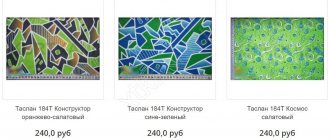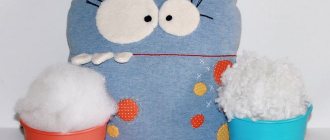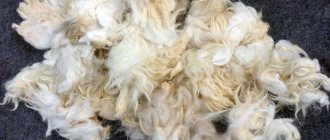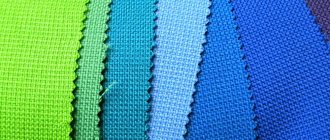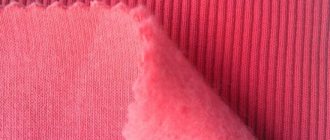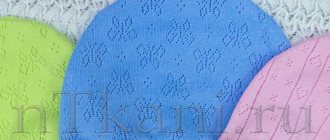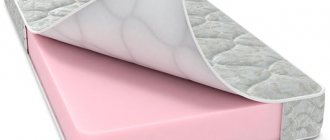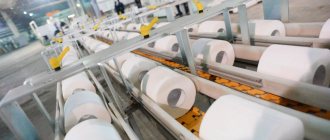Short description
Polypropylene carpets have a bright, colorful appearance, and their main feature is lightness, convenience, ease of care and a fairly affordable cost. The main material used in the manufacture of such a carpet is polypropylene. Polypropylene fiber belongs to the class of polyolefins, and its structure is very simple and consists of hydrogen and carbon molecules. A special feature of this chemical is its chemical inertness. This means that it is possible to add color to a polypropylene carpet only during production, and the finished product cannot be dyed.
Both the base of the carpets and the pile are made from polypropylene fiber. The threads are made using a special technology, as a result of which they are continuous and smooth, which significantly distinguishes them from natural fibers. This feature allows you to avoid unnecessary effort when cleaning the product from dirt.
There are several types of carpets based on their structure: loop, single-level (loops of the same size) and multi-level (loop sizes are different), as well as split (with a loop cut) and loop-cut (cut pile and loops). Depending on the conditions in which the carpet will be used, the choice of its covering depends.
Why is there such a great demand for polypropylene carpets? Cheap and practical, polymer carpets instantly occupied their niche in the carpet market. The cheapest and most popular material for their manufacture is polypropylene. Almost 90% of all man-made carpets are made from it, which is why they have the lowest cost. Perhaps this is the most important reason why polypropylene carpets are in the top sales.
Polypropylene carpet: advantages and disadvantages
A wide selection of carpets made from artificial materials is offered by many online stores and retail chains. More and more people prefer inexpensive, bright canvases that are easy to care for. They are used in living rooms, bedrooms, children's rooms, dining rooms, kitchens, and bathrooms. Despite many advantages, these products have their disadvantages. When choosing, you must take into account all the features in order to make the right decision.
What kind of material is polypropylene for carpet ? This is a synthetic fiber made from petroleum products. The canvas can consist entirely of this raw material (pile and base), or it can be combined with a base made of cotton or jute. The threads are continuous and smooth thanks to a special technology. This quality allows for quick cleaning and care of the finished product. The main advantages of the canvases:
- resistance to dirt, easy to clean;
- do not cause allergies;
- retain color throughout the entire service life;
- practical, soft, pleasant to the touch;
- cannot be a source of pests (ticks, moths and others);
- low cost;
- antistatic;
- coloring occurs during production, so there is a large selection of shades that can be conveniently selected to match the existing interior.
Elegant Turkish Loft carpet with geometric design starting at RUB 2,499.
In addition to the above qualities, the products tolerate loads, mechanical deformations, high traffic, and humidity well. They are often placed in hallways, children's rooms, and bathrooms. It is not recommended to place heavy furniture; the pile does not recover well. The disadvantages of coatings include the following:
- short service life;
- insufficient heat and sound insulating properties (in these parameters they are inferior to natural products);
- fire hazard (fire at 150 °C, do not place near a fireplace or heater).
There are significantly fewer disadvantages, but when choosing, you should pay attention to all the characteristics.
Lint-free carpet mat gray with ornament starting at RUB 1,403.
Properties of polypropylene carpets
A polypropylene fiber carpet is not much different from wool carpets. It also has a soft, thick pile that is matte and shiny. In addition, unlike wool carpets, synthetic products do not shed or fade.
The fact is that polypropylene is an inert and hydrophobic material, which means it does not absorb moisture. It is dyed during the production process of the thread, so the coloring pigments are contained in the fiber itself. Thanks to this, external factors do not affect the brightness of the color and pattern of the carpet.
This same property helps a polypropylene carpet to be resistant to many types of dirt. Even difficult stains from coffee or fruit juice can be easily removed from its fleecy surface without fear of washing off the paint or damaging the carpet fibers. Therefore, it is well suited for areas with a high risk of contamination, such as hallways and children's rooms.
But at the same time, a polypropylene carpet has lyophilicity - the ability to actively interact with oils. Oil stains on this carpet can be very stubborn and soak deep into the pile. Therefore, a polypropylene carpet should not be laid in the kitchen and other rooms where the risk of greasy stains is high.
Wear resistance is another important property of a synthetic carpet. Durable artificial fibers can withstand even heavy loads and withstand numerous contacts with shoe soles and animal claws. Its service life is about 7 years. However, in this indicator, polypropylene is inferior to natural wool, which retains its original appearance for up to 50 years.
In addition, polypropylene carpet pile can quickly restore its previous shape after prolonged compression, for example, under furniture legs. Thanks to this, the home owner has the opportunity to rearrange the furniture at will without fear that unsightly dents will remain on the carpet.
However, synthetic carpet is prone to deformation, so it is not recommended to hang it to dry or beat dust out of it. To keep the polypropylene coating perfectly clean, it must be cleaned with a vacuum cleaner, and heavy dirt must be removed with a gentle joke.
Perhaps the most important property of a polypropylene carpet is its low cost. Even people with low incomes can buy a carpet made of synthetic fiber, and the abundance of shapes and colors will help make it a real decoration for the home. In addition, synthetic carpets have a very beautiful pile that can compete with any natural material.
Positive properties of polypropylene carpets:
- Beautiful appearance;
- Long-term color retention;
- Low price;
- Easy to clean;
- Resistant to stains;
- Ease of processing.
The negative properties of synthetic carpeting include a tendency to deform and a low service life compared to natural wool.
Polypropylene carpet
Polypropylene carpet
04.03.2018
- What is such a product?
- Advantages of polypropylene coatings.
- Are polypropylene carpets harmful to health?
When choosing a carpet for the floor, we first of all take into account its price, quality and aesthetic characteristics, rules for cleaning and caring for it.
The most suitable carpet coverings in terms of the ratio of these parameters are products made of polypropylene. Polypropylene is one of the most popular and widespread synthetic materials today. It is widely used in the production of various consumer goods. Almost all artificial carpets are made from this fiber. And this is no coincidence. Polypropylene has many positive qualities, although some are wary of it. What is the material? Is he dangerous? Can it be used in a children's room? “Kovryonok” will try to answer all these and other questions in today’s article.
What is such a product?
Polypropylene carpet is a product made of artificial fiber, which is formed as a result of the processing of petroleum products.
Typically, a machine production method is used, which makes it possible to obtain the following types of yarn:
- Heat-set (Hit-set);
- Frise (Frise);
- BCF (BCF).
Heat-set (Hit-set)
is a new generation material. In order to obtain this thread, the primary fiber is subjected to special heat treatment, then stretched and twisted. It is believed that the more it is twisted, the better its quality. Hit-set carpets have good water-repellent and antistatic properties and can withstand loads well.
Frize thread
– is formed in the process of twisting two “hit-set” threads together. They are given S and Z curls and then processed under conditions of high humidity and temperature. The pile, after such processing, turns out to be voluminous and “curly”.
BCF
– the processing process of this thread is as follows: the polypropylene gradant is softened and created into the desired shape, given additional volume and finally painted in different colors. BCF carpets are the most budget-friendly. Over the entire period of operation, the color of the threads does not fade, since dyes are added to the fiber directly during the manufacturing process. They also have a continuous and smooth structure, so dirt does not penetrate deep.
Advantages of polypropylene coatings
Polypropylene carpets have a number of advantages compared to other synthetic materials:
- Low price. If you compare them with natural fibers, the price will be significantly lower.
- Hypoallergenic. Absolutely harmless, do not cause allergies, so they can be used in a children's room.
- Antistatic. They do not become electrified and do not accumulate static electricity. Thus, they do not attract dust and other dirt.
- Resistant to moths, mildew and mold. This material is not a suitable medium for the proliferation of various microorganisms.
- Easy to care for. Thanks to their dense structure, dirt is not absorbed into the fibers, so they are easy to clean.
- Resistant to deformation. Carpets withstand loads, mechanical damage, and high traffic levels well.
- Water-repellent effect. The products can be used in rooms with high humidity.
- Attractive appearance. Polypropylene carpets are beautiful, their fibers are smooth and shiny.
Like other carpets, polypropylene carpets have not only advantages, but also disadvantages:
- Low service life. Unlike silk or wool carpets, it can last up to 6 years.
- Low fire safety. Combustion (or melting) at 150 degrees Celsius.
- Insufficient thermal insulation. It is a worse heat insulator compared to natural fibers.
Are polypropylene carpets harmful to health?
The material used to produce this type of product consists of hydrogen and carbon molecules of the simplest structures.
Therefore, chemical fiber is not toxic. In addition, as mentioned earlier, polypropylene does not cause allergies or irritation. These products can be safely used in a room where there are allergy sufferers and small children. By the way, children's polypropylene coverings are very popular. They are practical, inexpensive, and have a bright, interesting design. Polypropylene carpet is an excellent combination of low price and good quality!
Tips for choosing a carpet
The material from which the carpet is made determines not only the cost of the product, but also directly affects its following characteristics:
- resistance to stains - how quickly the carpet gets dirty, how difficult it is to clean it;
- the ability to maintain the original appearance for a certain time;
- product wear;
- toxicity;
- fire-fighting properties.
Modern carpets are made from natural (sheep's wool, silk, cotton), artificial (viscose) and synthetic materials (polyamide, polyester, polypropylene). Products made from them have both advantages and disadvantages. For example, a viscose carpet is almost as good in appearance and properties as silk, but costs several times less.
To choose a quality carpet, you need to study the properties of each material, taking into account the room for which the product is purchased. Polypropylene carpets have excellent characteristics. Let's look at this material in more detail.
Pros and cons of polypropylene carpets
When naming the pros and cons, you should first understand what polypropylene and products made from it are. Not everyone correctly understands what it is and what features a polypropylene carpet has. So, polypropylene is a synthetic fiber, for the production of which granulate obtained from oil refining is used.
Polypropylene carpeting can be made 100% of this material, that is, both the pile and the base are made from it. In some cases, cotton and other mixed materials can be used as a base.
The main advantages of polypropylene mats:
- Affordable price, which is several times lower than for products made from natural materials;
- Practicality - easy to clean, does not absorb dirt, retains color for a long time;
- Does not accumulate static electricity;
- Does not promote the growth of dust mites and mold;
- Hypoallergenic.
These are not all the advantages that polypropylene coating has. Additionally, we can say about the huge selection of color and stylistic solutions, variety of sizes and shapes.
Disadvantages include:
- Instability to high temperatures and fire hazard;
- Short service life - a polypropylene carpet will last 5-7 years;
- Unnaturalness.
As you can see, there are not many shortcomings. The first can be reduced to zero if the operating conditions are met, and the second can even be called an advantage, taking into account the low cost of the coating.
Where is the best place to use this carpet?
Outdoor Polypropylene Carpets
Because it is hydrophobic, olefin is often used for outdoor applications and even on ships. The fiber dries quickly, does not absorb moisture and is not susceptible to mold or soaking. Additionally, dyeing at the manufacturing stage makes the fiber extremely fade-resistant, so exposure to the sun's UV rays will not cause the carpet to fade in color.
Use in basements
Many homeowners choose polypropylene for wet basements because of its moisture resistance and microbial resistance noted above. In exceptionally damp basements where the threat of mold is high, olefin carpet designed for the outdoors is the best option.
Lay a polypropylene covering in the nursery
This option seems successful, since a carpet has several undeniable advantages for a child’s room:
- Bright colors - what is important for a nursery;
- Stain resistance - don’t be afraid to get gouache dirty during children’s creativity;
- Hypoallergenic - it does not collect dust, does not allow pests to multiply and does not emit small particles that, when rising into the air, can serve as a source of allergies.
- Even the fact that it will have to be changed quickly, to the hand in the child’s room - the baby is growing, the style of the nursery is changing, naive designs can be replaced with more serious colors.
Advantages of hit set carpets
- a huge range of colors: from calm pastel shades to the brightest and most saturated;
- high color stability, do not fade from sunlight;
- high-quality and dense fabric structure, pleasant to the touch;
- hypoallergenic;
- good antistatic properties;
- repel moisture, dust, dirt;
- resistance to moths, mold;
- retains heat well;
- ease of care and cleaning;
- quick drying;
- light weight.
Harm and health benefits of polypropylene carpet
The main disadvantage of a polypropylene carpet is that it is not environmentally friendly. Polypropylene is a product of the modern chemical industry, for the production of which petroleum products are used. However, the finished carpet does not emit harmful emissions and does not cause skin irritation upon contact with the pile.
But it is important to remember that carpet and carpet made of polypropylene are flammable coatings, and when burned, they emit toxic gas. This gas is extremely dangerous for humans and causes severe poisoning. Therefore, they should be protected from fire and hot objects to prevent ignition.
Polypropylene protects a person from the cold worse than natural wool. If you can walk barefoot on a woolen carpet even in winter without fear of catching a cold, then in rooms with polypropylene covering you need to wear warm socks or slippers.
Disadvantages of polypropylene carpet:
- Not environmentally friendly;
- Retains heat worse;
- It is highly flammable and releases toxic gas when burned.
The benefits of polypropylene carpets for humans
Polypropylene carpets are absolutely hypoallergenic, for this reason they are indispensable for people suffering from allergies to wool. In addition, dust does not accumulate in their pile, which allows you to maintain clean air in the room and make breathing easier. This property of carpets will be especially useful for people with chronic respiratory diseases and allergies to dust.
The main disadvantage of wool carpets is that they often harbor ticks, moths and other pests that are extremely dangerous to human health. Synthetic carpeting is completely free of this negative quality. Polypropylene carpets never contain harmful insects that can cause serious illnesses.
A synthetic carpet is less susceptible to stains and is easier to clean, which means keeping the room tidy. This is especially important for children's rooms, where there must be perfect cleanliness. Parents can safely allow their baby to play on such a carpet without fear of dust and other contaminants.
Unlike other artificial materials, polypropylene is not electrified, which means that static electricity, which is harmful to humans, does not accumulate in such a carpet. In this indicator, it is in no way inferior to carpets made from natural materials.
Benefits of polypropylene carpet:
- Does not cause allergies;
- Does not accumulate dust;
- Easy to clean;
- Prevents the appearance of insects;
- Not electrified.
Polypropylene
This is a fairly practical plastic material. In addition to standard typical applications, polypropylene excels in fiber making, allowing it to expand its range of uses beyond conventional injection molding, including: rope, carpet, upholstery, garments and more.
Polypropylene is a man-made fiber that is durable and naturally stain resistant. It is worth noting that this type is quite popular due to its stain resistance and softness. This is a great option for a modern home because you can clean it with diluted bleach so dirt and stains aren't an issue!
But remember, carpets are not often used in bedrooms, so you can use carpets with more luxurious qualities. Modern manufacturers offer polypropylene fiber that has been made to feel super soft and ultra-luxurious.
For a living or dining room, look for a wool blend or a heavier material.
Advantages of polypropylene carpets:
- This is a relatively inexpensive material, so it will be good for your budget.
- Has a high level of flexural strength due to its semi-crystalline nature
- Has a low friction coefficient. Also, such a carpet performs quite well in contact with water.
- This material has good chemical resistance.
- Carpets have good fatigue resistance. Contains excellent impact strength.
- Carpets made from this material have good resistance to electricity and are thus an excellent electrical insulator.
- It is easier to repair damage.
- Very resistant to coloring
- Easy to clean
- durable
- Good color fastness
- Good value for money
Price
The cost of producing polypropylene is lower than the cost of producing many other types of fibers, so overall it will be significantly cheaper than nylon or even polyester rugs. Although it should be noted that carpet is generally not as durable as nylon carpet (depending, of course, on other factors affecting lifespan), so the one-time savings on the price difference may not be so in the long run. However, when you need to urgently purchase a carpet and not blow your budget, especially for temporary housing or a summer cottage, a polypropylene fiber carpet is best suited.
- An artistic carpet one square meter costs about 2.5 thousand rubles;
- A 2x3 meter hatset carpet will cost 7-8 thousand rubles.
On average, the price per square meter fluctuates around one and a half thousand. Industrial options will naturally be cheaper.
Care
Polypropylene carpets are easy to care for. The fibers of such a product practically do not absorb dirt. To get rid of dust and dirt, it is enough to vacuum the product once a week. To remove serious stains, you should additionally use household chemicals designed for cleaning carpets.
You should be careful when washing or cleaning such products, since polypropylene fiber is fragile. It may lose its shape or fade.
To avoid damaging the product with strong detergents, you must first test the product on a small area of the carpet.
Tips for choosing
When choosing polypropylene covering for your home, it is worth remembering that a quality product cannot be cheap. Although floor products with this composition are more affordable than similar products made from other materials, this does not mean that you need to purchase the most affordable option. It is important to remember that the cheaper a polypropylene carpet, the lower its quality and the shorter its service life.
Another tip is to give preference to products from well-known manufacturers, and also ask the seller for a certificate for the product. It is best to make purchases of polypropylene mats in well-known stores and large retail chains, about which you can read reviews, and where product quality control is at a high level.
If we talk about appearance, then you should focus only on your preferences. Children's carpets made of polypropylene should be bright and develop the baby's imagination. When choosing an option for another room, you should focus on its color design and practicality considerations.
Carpet selection criteria
When purchasing a carpet, many people focus solely on its aesthetic qualities. Of course, they are also important; the look of the room depends on them. However, experts recommend paying attention to the following properties:
Polypropylene carpet
- The material from which the thing is made. Modern carpet products are made from natural and synthetic materials. The first include nylon, acrylic, polyester and polypropylene. The natural fibers used to make carpets are cotton, wool and silk.
- Density. Carpet products can be distinguished by high, low, medium and exceptional density. You can determine it by bending the rug in half. If the base of the product is clearly visible, it means that it has a low density. If the pile knots are located tightly, it will be difficult to see the base.
- Pile type. Carpets have different fleecy surfaces. There are also lint-free samples. Each type has its own pros and cons.
- Size. You need to choose a carpet of a certain shape and area, focusing on the features of the room. It should be remembered: the less furniture in the room, the larger the area the product should have. Its shape usually follows the contours of the room.
Is polypropylene carpet harmful?
Many people doubt whether carpet is safe for health. The material is suspected of being toxic due to its production methods:
- BCF - fibers obtained from petroleum waste.
- Heatset - the previous thread is additionally heated, stretched and twisted to obtain a material similar in appearance to wool.
- Frize threads - the processing cycle goes even further, so that the fibers are twisted even more, the pigments saturate the material more.
Production is harmful to the environment. But the product itself does not emit toxic compounds exceeding the norm. If carpets are approved for use in children's rooms, then its relative safety has been proven. However, the cheapest options are not recommended for indoor use.
Disadvantages of hit set carpets
Among the disadvantages, it should be noted: melting at high temperatures, a tendency to wrinkle the pile under the influence of heavy furniture, as well as rapid abrasion of the coating in rooms with high traffic.
High-quality hit-set carpets look almost like natural wool carpets, but cost significantly less. They can be used in any room without exception, including children's rooms, bathrooms and hallways. Due to their properties and huge selection, they are deservedly popular among buyers.
The hit set carpet can be purchased in our online store, where only high-quality products from reliable manufacturers are presented. Thanks to a large range of products of various shapes, sizes and colors, it will not be difficult for you to choose exactly the model that is ideal for your home and will decorate your interior.
What real customer reviews say
If you look at the reviews of those who already have a polypropylene carpet in their home, we can note that most owners of this floor covering are absolutely satisfied. Especially often one can read delights about the fact that for a small price one can purchase a high-quality product with high aesthetic appeal.
Having purchased a polypropylene carpet, you can easily deal with dirt using either a vacuum cleaner or wet cleaning. If necessary, the rug can be washed, and in some cases without resorting to the expensive services of cleaning companies. This allows you to use the coating even in those rooms where the likelihood of contamination is especially high, that is, in the kitchen, hallway and children's room.
At the same time, none of the owners notes that during operation the polypropylene carpet product had any negative impact on the health of family members.
What are polypropylene carpets?
A polypropylene carpet is a carpet made of artificial synthetic material - polypropylene, which is obtained from the processing of petroleum products. Among the main advantages of this material, as well as carpets made from it, are its low cost, resistance to fading, practical and excellent for allergy sufferers and non-toxic.
Among the assortment of many modern stores (online stores) you can find a wide selection of polypropylene carpets of various sizes, shapes and especially colors and designs. These carpets are most popular for “dirtier” and walk-through areas such as the kitchen, hallway (corridor) and children’s room, while many people use them in bedrooms and living rooms, since these carpets do not cause allergies and are easy to clean (compared to with carpets made from natural materials).
Minuses
- Fiber protection. The carpet may be contaminated with dried dirt, causing stains that cannot be removed. They appear when dirt clings to the thread, making it difficult to clean. Also, if you actively walk on the carpet, it will soon darken.
- Low fire ratings. Due to this, the carpet quickly ignites upon any contact with fire, so it should be kept away from the source of a possible fire.
- Life time. This quality is considered a disadvantage. It is better not to lay it in places where you have to walk frequently. Although the lifespan of polyester carpet has been increased, it is still not as durable as nylon.
- Electricity storage. When actively walking on the carpet, it accumulates static electricity, which is why it actively attracts dust from around the room. If you lie on it, your hair and clothes will definitely not thank you.
- The appearance deteriorates. The fibrous cover is synthetic, so it quickly rolls and breaks, which causes the aesthetics of the product to be lost.
Polypropylene carpet for children's room
A carpet for a children's room must meet the following characteristics:
- hypoallergenic;
- naturalness;
- softness;
- ease of care.
Despite the advantages of natural materials, they have one significant drawback - the ability to cause allergic reactions. Otherwise, a children's polypropylene carpet meets three of the four criteria. This material is hypoallergenic and easy to clean. Products of a wide variety of shapes and colors are made from polypropylene, with a long pile and a pleasant-to-touch surface.
Advantages of polypropylene carpets
Among artificial carpets, polypropylene ones have one of the longest lists of advantages, so let’s take a closer look at them:
- Depending on the quality of the product, polypropylene carpets are cheap and cost much less than natural carpet products.
- Polypropylene carpets do not electrify and do not accumulate static electricity (and therefore do not attract large quantities of dust).
- To the touch, polypropylene rugs are similar to wool (high-quality products do not feel like cheap synthetics to the touch).
- Carpets made from this material are hypoallergenic (do not cause allergic reactions), so they can be used in various areas of your home (for example, in the bedroom and children's room).
- Polypropylene carpets can be found in almost any color and design, since dyes are added during the production of polypropylene thread, from which the carpet is ultimately made, so such carpets do not fade in the sun over time, have a beautiful bright shade and are available in a wide variety of colors and shades (it’s easy to choose the most suitable product for your interior). By the way, children's polypropylene carpets are quite popular, as they are cheap, practical and often have a bright and beautiful design.
- Polypropylene carpets are not afraid of moisture, so they can be used in rooms with high humidity without fear that they will begin to rot or fungus will develop in the pile (provided that the carpet does not have a cotton base).
- Carpets made of polypropylene (as well as other synthetic floor coverings), unlike natural ones (wool), do not harbor insects (moths, dust mites).
- Polypropylene carpets are easier to clean, unlike carpets made from natural materials.
Despite many obvious advantages, polypropylene carpets also have their disadvantages, which must also be taken into account when purchasing carpets.
